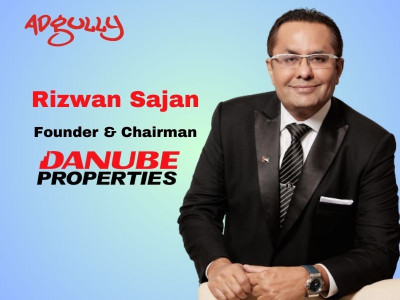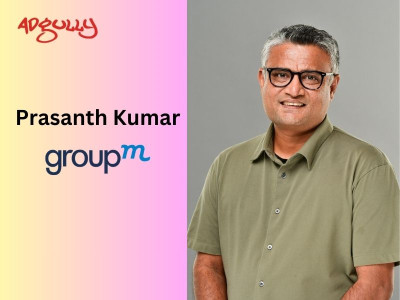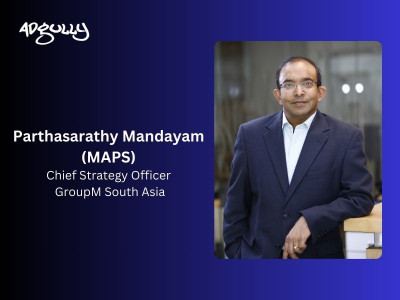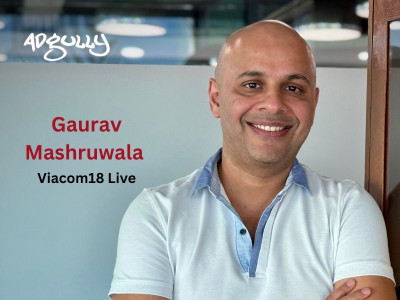“OTT is no longer the top layer, it has become a source of content for the massesâ€
Continuing with the Video Knowledge Series by Adgully in partnership with mFilter, this episode features Divya Dixit, Senior VP - Marketing, Direct Revenue & Analytics, ALTBalaji.
With over 21 years of experience in marketing and brand building across industries such as digital, broadcast, telecom and music, Dixit is leveraging her eclectic and rich experience across OTT and broadcast media to build brand ALTBalaji.
India is currently the world’s fastest growing OTT market, and is all set to emerge as the world’s sixth-largest market by 2024. The sector is expected to grow at a CAGR of 28.6% over the next four years to touch revenues of $2.9 billion. The average time spent by Indian users on OTT platforms has leapfrogged since early March this year due to the pandemic and subsequent nationwide lockdowns. All in all OTT has given a new shape to the entertainment world.
In this interaction with Adgully, Divya Dixit speaks about the growth of the OTT industry in India, he growing focus on regional language content and the road ahead.
How do you view the growth of the OTT sector in India? What is the growth trajectory that you see it taking going forward?
For a long time now, people have been talking about OTT being a ‘Sunrise Industry’. I don’t think it is so anymore. The industry has grown in a trajectory which is definitely higher than the other industries. But that’s just numbers and percentages.
OTT is also becoming a choice of content destination. From a creative perspective, whether it is sports, news, shows or even movies as of late, they are choosing to be digital because of the continuous penetration of the digital sector in the country. Hence, all creators find value in being digital and being present on digital.
The other part is the consumer, who love being on digital for the sheer convenience. Content can be consumed by the consumer whenever he or she wants to consume it. People can catch up with news, music or any other content when they want and they aren’t time bound by it. These are the aspects that drive digital. Because consumers are driving digital, publishers of all sorts of content choose to be a part of this ecosystem.
People are seeing value in digital now, which should lead to revenue growth, which is the next step. For every business, it is important for the revenue model to work, whether it is SVOD or AVOD. With this kind of growth in consumption, growth in revenue will also happen.
Is OTT still a layer on the top? Does it still remain entertainment for the niche?
Even giants like Netflix and Amazon have started making content in Indian languages. The fact that they are making content in so many Indian languages means that OTT has reached the masses. It is no longer just a layer on the top or just for metros. For me as a marketer, India is divided into two segments – metro India and Bharat.
The next billion will come from rural India. India still needs to grow in terms of digital penetration and connections. While China is 96% digitally connected, India is still at 54%, which shows the scope for further growth.
Once OTT became a mass play in India, at ALTBalaji we pushed for making content for Bharat. We are a mainstream OTT platform and that’s what we focus on.
OTT is no longer the top layer, it has become a source of content for the masses.
With the growing competition and the content being churned out, do you see some consolidation happening in the near future?
Today, there almost 40+ OTT players in the country. Many have shut shop due to some reason or the other and I do believe in the near future, consolidation is a possibility. We’ve seen this happen in broadcast as well. In 2008, there were some 15 GEC channels, today we have 5 main GEC channels that survive and take 80% of the revenue pack.
In this respect, as business models and revenue streams evolve and investments from other fundraisers become more revenue specific, when OTT platforms question their profitability, which I feel is now happening, we will definitely see aggregation happening.
In the digital ecosystem, people keep experimenting with what keeps them going, and we will definitely see co-productions and partnerships.
How are consumers absorbing content in India differently from the global markets?
At ALTBalaji, we are a globally oriented app. We have a lot of diaspora that comes from the UK, the US, Australia, Dubai, etc. If I have to speak about ALTBalaji’s Hindi content, I think the aesthetics are largely the same for Hindi speaking audiences across the globe. For example, we see a lot of downloads in Spain because there is similarity in culture. When it comes to audiences in India, I think Indians love to watch a good story. I feel Indians are slightly bored of the content on TV, especially with TV under strict guidelines, it is OTT that pushes the narrative and storytelling. Indians love narratives in their native language and also narratives that are great stories, which is very similar to global audiences. The Indian audience isn’t any different from global audiences in terms of content consumption. It’s the medium that allows us to push the narrative and allows the content to be segmented.
Do you think the homegrown OTT players are gradually stealing a march over the international players?
There’s a huge market in India, while everyone has a place, even international content is being presented for the Indian masses through dubbing and other methods. When I compare ALTBalaji to other international giants, I’d say we are the smallest platform in terms of content, marketing and tech budgets. For us, there is no choice but to make the most of every buck we spend if I have a finite budget and have to churn out a great portfolio which appeals everyone. Nobody loves one single genre, and hence if the catalogue is great overall, people will buy it. Homegrown OTT platforms have a challenge to create homegrown content for Indian audiences in every Indian language. At ALTBalaji, we have a clear focus on conquering the Hindi audiences and then move on to other languages. We have seen that people will love to subscribe to or choose your platform where not only the content is in their language but also created for them specifically.
Lastly, what are your views on the growing calls for regulating digital content, including OTT content?
Honestly, self regulation is the way to go. While I have the highest respect for the Ministry of Information & Broadcasting (MIB) and we do look forward to what they will put out for us, I think OTT is a medium that is growing and is the medium of the future and by putting too many regulations you might kill great narratives. If the MIB and the council of OTT players come together and work on creating some guidelines, that would be a start to a great partnership.
















Share
Facebook
YouTube
Tweet
Twitter
LinkedIn